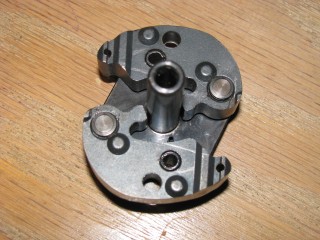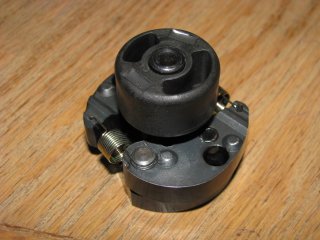| Author | Message | ||
Rick_a |
A couple years ago I decided to off a failing adjustable electronic ignition module for an old-school Dyna S dual fire mechanically advanced unit. I read up in an old H-D drag racer's book on how to modify these mechanical advance mechanisms to get the best out of 'em for performance applications. Little did I know how much trial and error and tinkering I was in for. To begin with, once I had the full advance set where I wanted it, the initial advance was too low to allow for a steady idle. The bike would often backfire and die out. Conversely, set for a good idle, the mechanism advanced too far and caused detonation and loss of power. As these are designed for shovelheads and ironheads they are far from ideal out of the box for a performance application. The first attempt involved replacing the limiting pins with larger ones, drilling out larger lightening holes, and using stronger springs as the unit fully advanced at only around 1200 RPM. This had it advancing at 1500 RPM (still too fast) and reduced the advance to about 8 degrees (a bit too little). This worked acceptably well until I had additional performance work done. Attempt number two was drilling out the advance holes bigger, shaving the outsides of the weights to reduce weight (and prevent them from hitting the gearcase) and even heavier springs. Now I had 11 degrees of advance travel ( a pretty good compromise) and full advance at 1800 RPM (still too fast!). This fast advance is only a problem on hot days or stop and go traffic. Leaving a stop, the throttle must be opened slowly until about 2500 RPM or light detonation will occur...a huge annoyance.   Today I decided to go a bit further. I shaved the weights some more and drilled the lightening hole as big as possible. If this doesn't do it, I'll be drilling 3 additional small holes on each (there's small raised bearing surfaces on the backside that must be avoided so multiple holes will be necessary) and enlarging those until I can get it to hit full advance at around 3000 RPM.   Assembled and ready to go back in So the moral of the story is, if you want to go old-school, be ready to do a lot of messing around. Even when tuned properly it's not as smooth as the stock tuber ignition and doesn't have the VOES feature (for instance you can't just whack it open if in a gear too low...it'll just fall on it's face), and is nowhere near as smooth as a well set-up single-fire adjustable electronic ignition. The dyno doesn't much care which you use, and there's not much to go wrong with a mechanically advanced, electronic triggered ignition, which are about all it has going for it. Another is that this ignition will run on very low voltage, so it can limp you home if you have charging system or battery issues. |